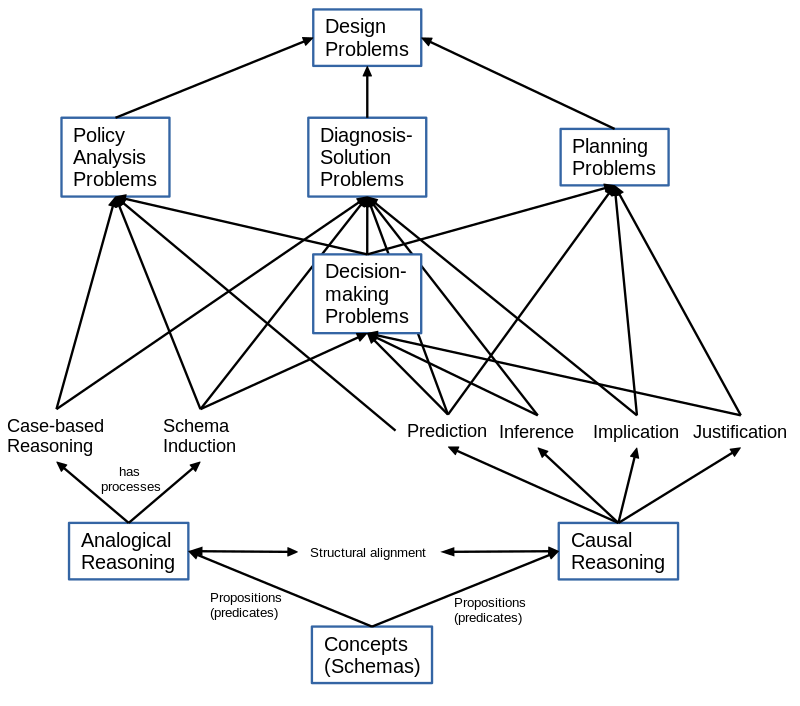Taxonomy of meaningful learning
Introduction
The taxonomy of meaningful learning includes important components of problem solving learning, which is, according to Jonassen (2007) [1], the most meaningful kind of learning outcome. His taxonomy “describes the skills that are necessary for meaningful learning - learning that is intentional (goal-directed and regulatory), active (manipulative and observant), constructive (articulative and reflective), and authentic (complex and contextualized).. He postulates that problem-solving is the most meaningful goal state of learning and that it requires two fundamental reasoning skills: analogical reasoning and causal reasoning. These skills are best taught with some type of problem-oriented learning approach.”
See also:
The Taxonomy
“In this taxonomy, four different kinds of problem solving are arranged in a hierarchical manner. Prerequisite/corequisite with problem-solving outcomes are two fundamental reasoning skills that underpin all problem solving: analogical and causal reasoning. These forms of reasoning call on concepts-in-use, and lower- and higher-order propositions comprised of concepts and relationships. Problem-solving instruction should engage learners in solving problems, analogical comparisons of structurally similar problems, and analysis of the causal relationships (higher-order propositions) contained in the problem space.” (Jonassen, 2007: p. 30).
Bibliography
- ↑ Jonassen, D. H. (2007). A Taxonomy of Meaningful Learning. Educational Technology, 47(5), 30–35. Retrieved from https://www.jstor.org/stable/44429440?seq=1#metadata_info_tab_contents
